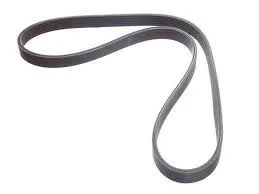- Arabic
- French
- Russian
- Spanish
- Portuguese
- Turkish
- Armenian
- English
- Albanian
- Amharic
- Azerbaijani
- Basque
- Belarusian
- Bengali
- Bosnian
- Bulgarian
- Catalan
- Cebuano
- Corsican
- Croatian
- Czech
- Danish
- Dutch
- Afrikaans
- Esperanto
- Estonian
- Finnish
- Frisian
- Galician
- Georgian
- German
- Greek
- Gujarati
- Haitian Creole
- hausa
- hawaiian
- Hebrew
- Hindi
- Miao
- Hungarian
- Icelandic
- igbo
- Indonesian
- irish
- Italian
- Japanese
- Javanese
- Kannada
- kazakh
- Khmer
- Rwandese
- Korean
- Kurdish
- Kyrgyz
- Lao
- Latin
- Latvian
- Lithuanian
- Luxembourgish
- Macedonian
- Malgashi
- Malay
- Malayalam
- Maltese
- Maori
- Marathi
- Mongolian
- Myanmar
- Nepali
- Norwegian
- Norwegian
- Occitan
- Pashto
- Persian
- Polish
- Punjabi
- Romanian
- Samoan
- Scottish Gaelic
- Serbian
- Sesotho
- Shona
- Sindhi
- Sinhala
- Slovak
- Slovenian
- Somali
- Sundanese
- Swahili
- Swedish
- Tagalog
- Tajik
- Tamil
- Tatar
- Telugu
- Thai
- Turkmen
- Ukrainian
- Urdu
- Uighur
- Uzbek
- Vietnamese
- Welsh
- Bantu
- Yiddish
- Yoruba
- Zulu
Gor . 27, 2024 18:01 Back to list
Exploring the Benefits and Applications of Variable Speed Belt Systems in Modern Machinery
Understanding Variable Speed Belts Enhancing Efficiency in Motion Control
In the world of manufacturing and automation, the role of conveyor systems is paramount. At the heart of these systems lies a crucial component the variable speed belt. These belts are engineered to offer flexibility and efficiency, serving a multitude of applications across various industries from automotive to food processing.
Variable speed belts are designed to operate at different speeds, allowing for precise control over the movement of goods and materials. This adaptability is essential for modern production lines that require the ability to respond quickly to fluctuating demands. By adjusting the speed of the conveyor belt, manufacturers can optimize the flow of products, reduce bottlenecks, and enhance overall productivity.
One of the primary advantages of variable speed belts is their energy efficiency. Traditional conveyor belts often operate at a fixed speed, leading to unnecessary energy consumption, particularly when goods are waiting to be processed. In contrast, variable speed belts can slow down or speed up in response to real-time data and operational needs. This not only conserves energy but also prolongs the lifespan of both the belt and the entire conveyor system, resulting in reduced maintenance costs.
Moreover, variable speed belts contribute to improved product handling. In industries where delicate items are transported, controlling the speed is vital to avoid damage. By utilizing variable speed technology, operators can ensure that fragile products are moved gently, minimizing risks and ensuring quality throughout the supply chain. Additionally, these belts can also cater to applications that require quick changes in speed to accommodate different products or packaging methods.
variable speed belt

Another significant benefit is their compatibility with advanced control systems. With the integration of sensors and automated controls, variable speed belts can operate seamlessly within smart manufacturing environments. This integration allows for predictive maintenance, where systems can monitor performance and diagnose issues before they lead to failures. As a result, manufacturers experience reduced downtime, enhancing overall operational efficiency.
The versatility of variable speed belts also extends to their construction and materials. They can be made from various substances, such as rubber or plastic, enabling customization based on specific application needs. This means that whether a business requires a heat-resistant belt for high-temperature processes or a chemically resistant option for environments involving harsh substances, variable speed belts can be tailored to meet those demands.
Additionally, implementing variable speed belts can lead to better inventory management. By controlling the pace of product flow, companies can synchronize their operations more effectively. This allows for just-in-time inventory practices, reducing the holding costs associated with excess stock and contributing to a leaner manufacturing model.
In summary, variable speed belts represent a significant advancement in material handling technology. Their ability to adapt speeds enhances efficiency and energy conservation, making them an essential choice for modern manufacturing environments. With benefits ranging from improved product handling to better integration with cutting-edge control systems, it’s clear why industries are increasingly turning to variable speed belts for their conveyor systems. As manufacturing continues to evolve, these belts will play an integral role in shaping the future of motion control, driving innovation and productivity in countless sectors.
-
Korean Auto Parts Timing Belt 24312-37500 For Hyundai/Kia
NewsMar.07,2025
-
7PK2300 90916-T2024 RIBBED BELT POLY V BELT PK BELT
NewsMar.07,2025
-
Chinese Auto Belt Factory 310-2M-22 For BMW/Mercedes-Benz
NewsMar.07,2025
-
Chinese Auto Belt Factory 310-2M-22 For BMW/Mercedes-Benz
NewsMar.07,2025
-
90916-02660 PK Belt 6PK1680 For Toyota
NewsMar.07,2025
-
drive belt serpentine belt
NewsMar.07,2025

